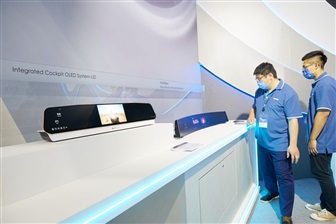
Samsung Electronics has announced availability of an 8Gb OneNAND chip that takes advantage of advanced 30nm class process technology. Based on a single-level-cell (SLC) NAND flash design, the new high-density OneNAND addresses the need for more code data storage in smartphones.
Samsung said the high-density OneNAND memory is now sampling with volume production scheduled by the end of May 2010.
The 8Gb OneNAND reads data at 70 megabytes per second (MB/s), more than four times the speed of conventional NAND (17MB/s). In addition, by applying 30nm-class process technology, Samsung is able to raise productivity by 40% over its previous 40nm-class design.

Samsung HKMG DDR5
Samsung Electronics has expanded its DDR5 DRAM memory portfolio with a 512GB DDR5 module...
Photo: Company

Nvidia GeForce RTX 30 series GPUs
Nvidia's GeForce RTX 30 series GPUs are powered by the company's Ampere architecture. The...
Photo: Company

Apple HomePod mini
Apple's HomePod mini is the newest addition to the HomePod family. At just 3.3 inches tall,...
Photo: Company

Apple 13-inch MacBook Pro with Magic Keyboard
Apple has updated the 13-inch MacBook Pro with the new Magic Keyboard for an improved typing...
Photo: Company

Apple iPad Pros
Apple's new iPad Pros comes with the latest A12Z Bionic chip, an ultra-wide camera, studio-quality...
Photo: Company
- Musk says chip capacity will decide winner of AI race (Mar 21) - EE Times
- Google taps MediaTek for cheaper AI chips (Mar 17) - The Information
- European project gets $260 million for HPC chip sovereignty (Mar 6) - EE Times
- The trouble with MAGA's chipmaking dreams (Mar 3) - Economist
- Automotive chips: Gloom and doom or boom by 2030? (Feb 14) - EE Times
- Deepseek is more Wall Street than Silicon Valley (Feb 3) - Culpium, by Tim Culpan
- Tech CEOs try to reassure Wall Street after DeepSeek shock (Jan 30) - Wall Street Journal
- TSMC to make chips for cryptominer Bitdeer at new US fab (Jan 17) - Culpium, by Tim Culpan
![]() Interview: J-Star eyes AI-enabled e-bikes after Nasdaq success
Interview: J-Star eyes AI-enabled e-bikes after Nasdaq successJ-Star Holding, a composite materials company with extensive patents and expertise in carbon fiber...
![]() TSMC's 2nm leak
TSMC's 2nm leakThe leakers were later connected to TSMC supplier Tokyo Electron (TEL), which sparked discussions about cybersecurity in the current age of geopolitical...

Humanoid robotics, 2025 - Market trends, critical components & strategic shifts
DIGITIMES believes that due to the high cost of hardware components, humanoid robots can hardly see rapid adoption across various...

Innolux deployments with Pioneer acquisition
Innolux to invest NT$33.7 billion to acquire Pioneer, a move driven by three key strategic initiatives to expand its automotive...

South Korea panel maker business status
South Korea's two major panel makers have made progress in restructuring their businesses and will continue to strengthen OLED...






